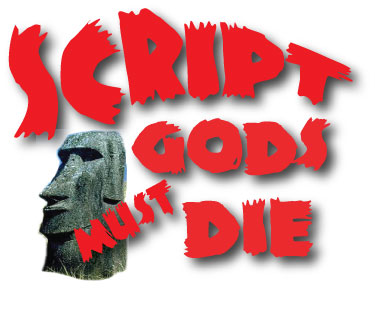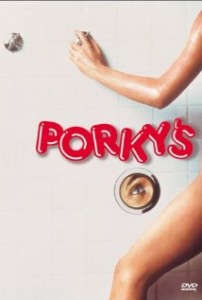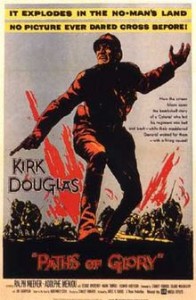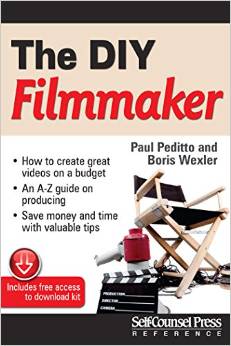Ah, to be the poet! On writing only those things that strike his fancy! Writing what resonates with him, period. If they get it they get it, if not, fuck ’em!
Screenwriters don’t get that luxury. As Mamet told us long ago, “screenwriting is a collaborative business. Bend over.”
Seems to me a sign of maturity for a screenwriter is when he becomes aware, not just of what it is he wants to say, but of his audience and the marketplace.
William Faulkner and F. Scott Fitzgerald wrote novels that will be around 500 years from now. Yet they struggled in the Hollywood Studio system. Producing literary works under those conditions, under the thumbs of studio bosses who wrote those huge checks, whole different game.
Today it’s more about emerging technologies, emerging distribution markets, the democratization of cinema where everyone and their Uncle Al gets to make a movie. Warhol’s 15 Minutes Of Fame was never so close.
This post is about defining the movie you’re writing so you can have a shot of success when it comes time to sell the damn thing.
It’s undoubtedly too simplistic, but I’m boiling this down to three paths to glory…
- THE STUDIO MOVIE
Remakes, sequels, comic book and graphic novel adaptations, Board Game and toy movies, branded entertainment. Tentpole stories, mega-million dollar budgeted. Mythology and monster hooks. Cross-platform marketing possibilities that thrill more than the movie itself. If any of these describe your movie, then it’s probably a Studio flick and will have to be sold on that level.
And good luck with that!
Why do Studios fuck with great first movies like LET THE RIGHT ONE IN, or MANCHURIAN CANDIDATE? Because there’s $$$$$ in it, dummy! The most recent GIRL WITH THE DRAGON TATTOO wasn’t awful, but Howard Stern bringing back PORKY’S? Wow, can’t wait.
Here’s an awesome list of 75 Hollywood remakes and reboots in some stage of development for 2012. Included on the list: CONAN, CREATURE FROM THE BLACK LAGOON, DUNE, THE CROW, GHOSTBUSTERS, GILLIGAN’S ISLAND, ROBOCOP, TEENAGE MUTANT NINJA TURTLES.
Studios, of course, also dedicate a piece of their operations to low-budget film-making in hopes of striking gold in the age of PARANORMAL ACTIVITY. You could back 50 stinkers at 1 mil per with only 1 PARANORMAL bringing you back, what, a billion for three movies? Studio bean-counters are brilliant in a I-am-my Beamer mindset. Do they care about the content of SLINKY, THE MOVIE? Probably not, if it costs $30 mil to get in the can but brings back 200 mil. If people are buying tickets for this dreck, IS it dreck?
So now you know: If you’re writing SLINKY, THE MOVIE, you’re a Studio guy. If not, you’re probably writing…
- INDY
This is NOT meant to be any sort of DEFINITIVE RULE, but I’d say, generally, low-end Indy could be considered $500,000 to 2 or 3 million. $5 to $10 million seems high-end Indy. These movies have more leeway creatively. 95 out of 100 will require bankable names to finance. The other five have put together angel financing of some sort through friends, family, or the Pope himself– because getting a million dollar movie WITHOUT a name will take something akin to a miracle. The search for a star can last YEARS. My brother was been on this exact quest for over seven years. It appears he’s very close (Google BLACK WINGS PAQUIN) but as my producer friend once said, the money is only real “when I’m eating the steak from the banked check that cleared.” Healthy distrust is a good thing.
So, if you’re writing a movie with a budget in this range, understand that it’s likely won’t happen without star involvement. If you have no agent, then the CATCH-22 dance begins. What would that sound like? Call up the Reese Witherspoon’s agent. The assistant’s assistant answers. “Got a phenomenal project for Reese. Riveting period-piece drama about a lady hot dog salesmen at a Brooklyn Dodgers game who uncovers a galactic conspiracy–” The assistant interrupts you, with three words… “Are you funded?” “Well…not yet, but once Reese is on board–” Click. The call might not even get that far, as only an amateur would call under such circumstances. You need a star to get the money but a star won’t read your script without the money in the bank. Unraveling the mysteries of the Sphinx is child’s play by comparison.
- MICRO
Look, it’s not a panacea for word hunger. It’s a world filled with no-name actors, microscopic production budget limitations, drama upon drama that comes from NEVER having enough money when you make the movie.
But…
You’re making the movie!
The beauty of micro is the CONTROL it affords you. What exactly is the budget for micro? Like with Indy, there’s no one-size-fits-all definition, but I’m comfortable thinking of micro as any budget you can raise yourself. If it’s within your power to raise 200K, I’m calling that micro. If you can only raise 10K but it gets the movie made, it’s micro.
Liberating in the extreme, knowing that you can pull it off for 20- 30-50K. Wells and Cassavetes would have loved the digital age. No more bad wine commercials. Imagine Orson with an Alexa camera or 7D? A beautiful thing for you the writer, to take back control of the process.
Like I said, no fantasies here. There are TONS of bad micro movies made, perhaps more bad movies made than ever before in history. But a few of them will make a noise, and the film-makers wouldn’t have had that opportunity without the technological or marketplace innovations of just the last few years.
So, know the movie you’re writing. Know the audience and the market. Once the “fun” of writing the thing is over, then the selling of the toothpaste begins.
Your mission, should you choose to accept it, or not.


![BD021~The-Great-Gatsby-by-F-Scott-Fitzgerald-Posters[1]](http://www.scriptgodsmustdie.com/wp-content/uploads/BD021The-Great-Gatsby-by-F-Scott-Fitzgerald-Posters1-211x300.jpg)



